
Matilda Alice Victoria Wood, professionally known as Marie Lloyd, was an English music hall singer, comedian and musical theatre actress. She was best known for her performances of songs such as "The Boy I Love Is Up in the Gallery", "My Old Man " and "Oh Mr Porter What Shall I Do". She received both criticism and praise for her use of innuendo and double entendre during her performances, but enjoyed a long and prosperous career, during which she was affectionately called the "Queen of the Music Hall".
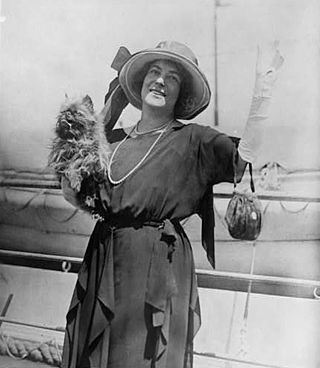
Frances Davis Alda was a New Zealand-born, Australian-raised operatic lyric soprano. She achieved fame during the first three decades of the 20th century due to her outstanding singing voice, fine technique and colourful personality, as well as her frequent onstage partnerships at the Metropolitan Opera, New York, with Enrico Caruso.

Neil Gow (1907–1919) was a British Thoroughbred racehorse and sire who won the classic 2000 Guineas in 1910. In a racing career that lasted from spring 1909 until July 1910 the colt ran ten times and won seven races, attracting attention both for his racing ability and for his difficult and unpredictable temperament. He raced four times against the 1910 Epsom Derby winner Lemberg, winning twice outright and dead-heating on a third occasion. Neil Gow was one of the best British two-year-olds of 1909, when he won the National Stakes at Sandown Park, the Imperial Produce Stakes at Kempton Park and the Champagne Stakes at Doncaster. After winning the Craven Stakes on his first appearance of 1910 he overcame a strong field to win the 2000 Guineas at Newmarket. He finished fourth in the Derby and then dead-heated in the Eclipse Stakes. He was injured in training later that year and was retired from racing at the end of the season. He had limited success as a breeding stallion before his death in 1919.

Spearmint (1903–1924) was a British Thoroughbred racehorse and a sire. In a brief racing career which lasted from 1905 until June 1906, he ran five times and won three races. After showing moderate form in 1905, he won The Derby on his seasonal debut at age three and then became the first British horse for twenty years to win France's most important race, the Grand Prix de Paris. He became a successful breeding stallion, siring major winners in Europe and the United States. His daughters produced the winners of eight classic races. Spearmint was placed on the winning sires and brood-mare sires lists on several occasions.
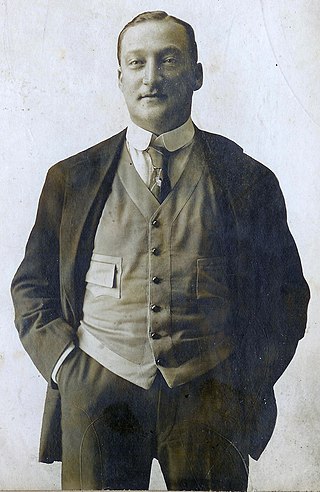
Alexander Hurley was an English music hall singer, and Marie Lloyd's second husband.

Charles Kurtsinger was an American Hall of Fame and National Champion jockey who won the Triple Crown in 1937.

Bayardo (1906–1917) was a British bred Thoroughbred racehorse with an impressive record, both on the racecourse and at stud, where he was a leading sire.

George Lambton was a British thoroughbred racehorse trainer. He was British flat racing Champion Trainer in the 1906, 1911 and 1912 seasons.

Swynford was a British Thoroughbred racehorse. Bred at the 16th Lord Derby's stud in Lincolnshire, England he was sired by John O'Gaunt, a son of Isinglass, winner of the British Triple Crown in 1893. His dam was Lord Derby's foundation mare and 1896 Epsom Oaks winner Canterbury Pilgrim who also produced Chaucer, the 1927 and 1933 Leading broodmare sire in Great Britain & Ireland.

George William Wright was an Anglican Bishop in Africa in the mid-20th century. He was born on 17 December 1873, educated at Barnsley Grammar School and ordained in 1906 following a 15-year career as a civil servant. After a curacy at Christ Church, Derby he went as a CMS missionary to Mombasa where he remained in various capacities until 1921 when he returned to England as Vicar of Boulton. In 1923 he was consecrated Bishop of Sierra Leone and in 1936 of North Africa. He was Vicar of Templecombe from 1942 to 1951 and an Assistant Bishop in the Diocese of Bath and Wells. He died on 11 August 1956

Henriette-Lucy, Marquise de La Tour-du-Pin-Gouvernet was a French aristocrat famous for her posthumously published memoirs entitled Journal d'une femme de 50 ans. The memoirs are a first-hand account of her life through the Ancien Régime, the French Revolution, and the Imperial court of Napoleon, ending in March 1815 with Napoleon's return from exile on Elba. Her memoirs serve as unique testimony to much unchronicled history.

Lemberg (1907–1928) was a British Thoroughbred racehorse and sire. He won seventeen times in a career that lasted from 1909 until 1911, taking major races at two, three and four years of age. Lemberg won his most important victory as a three-year-old in 1910 when he won The Derby. His career was marked by his rivalries, first with the fast and precocious Neil Gow and later with the outstanding middle-distance runner Swynford. Lemberg went on to have a successful career at stud.

My Dear was a British Thoroughbred racehorse and broodmare. In 1917 she showed top-class form, winning both her races including the prestigious Dewhurst Stakes. In the following year she finished second in the 1000 Guineas and was then awarded the New Oak Stakes on the disqualification of Stony Ford. She went on to win the Champion Stakes, Lowther Stakes and Liverpool Autumn Cup as well as finishing second in the wartime substitute St Leger. She was not a great success as a broodmare but did produce at least two winners before her death in 1933.
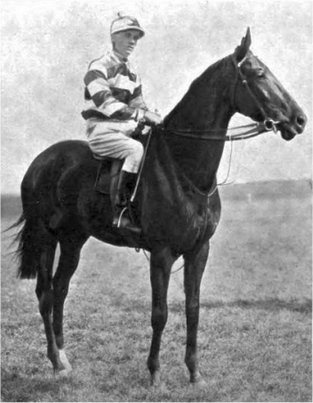
Flair was a British Thoroughbred racehorse and broodmare. After finishing fourth on her debut in July 1905 she was undefeated in her four subsequent races. She was the dominant two-year-old of either sex in England in the autumn of 1905, beating male opposition to take the Imperial Produce Stakes, Middle Park Plate and Free Handicap. In the following spring, she was a very easy winner of the 1000 Guineas and was strongly fancied for the Epsom Derby before her racing career was ended by injury. Her record as a broodmare was disappointing.
Mary Shuttleworth Boden was an activist in the British temperance movement. She was affiliated with the Woman's Christian Temperance Union, British Women's Temperance Association, British Temperance League, Girls' Friendly Society, Women's Union Church of England Temperance Society, Bands of Hope, and the Woman's Auxiliary Union. She donated land to Derby on Bold Lane in memory of her husband which was equipped with sixteen swings as an area for girls, boys and small children to play.
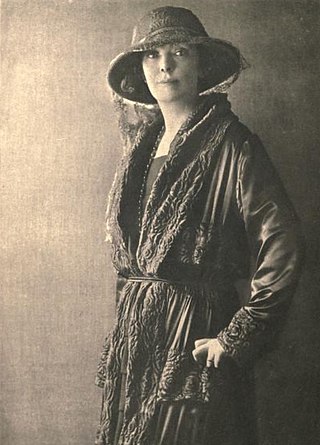
Lady Angela Selina Bianca Forbes was a British socialite and novelist who was known as a forces sweetheart for organising soldiers' canteens in France during the First World War. She reverted to her maiden name in 1929.

George Arthurs was an English songwriter, playwright, composer, author and screenwriter who contributed lyrics to several successful musical comedies such as The Belle of Mayfair (1906), Havana (1908) and Yes, Uncle! (1917), before writing dialogue for such films as The Yellow Mask (1931).
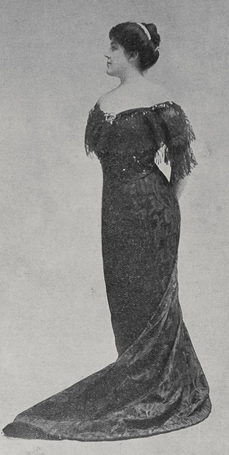
Marie Narelle, born Catherine Mary Ryan, was an Australian singer, billed as "the Australian Queen of Irish Song".

Marie Lloyd Jr. was a British entertainer, composer and actress notable for her performances impersonating her mother, the music hall performer Marie Lloyd.

Henry Johnson was a British acrobat, equestrian gymnast, and tightrope walker for Hughes' and Sanger's circuses in the early 19th century.



















